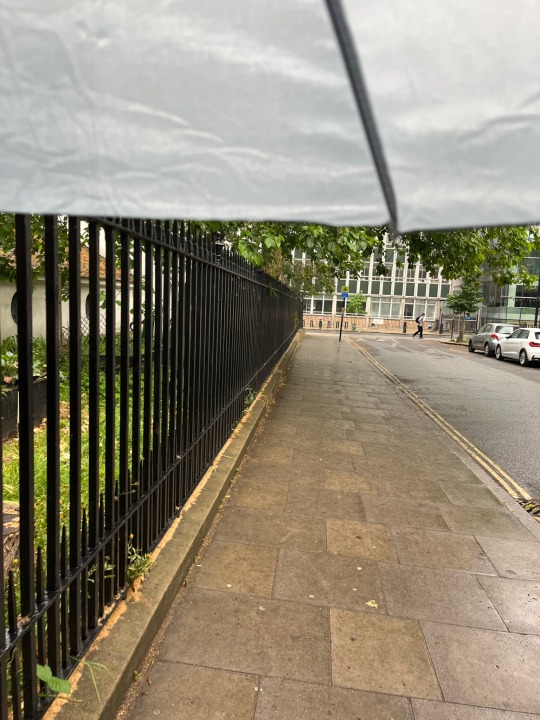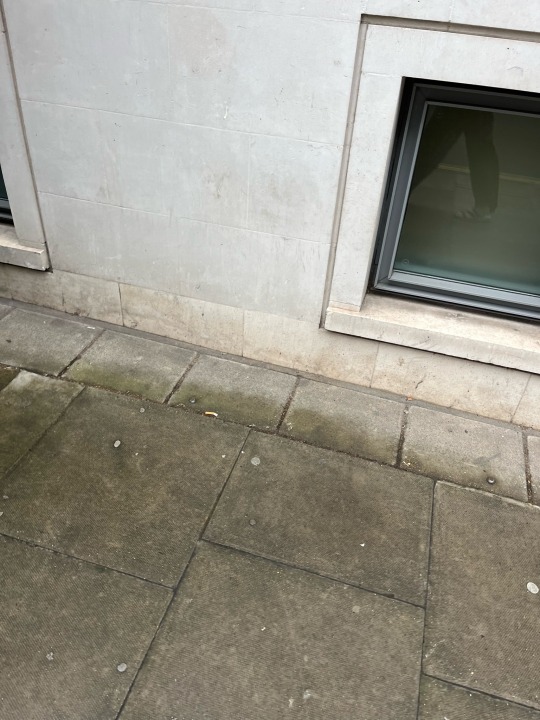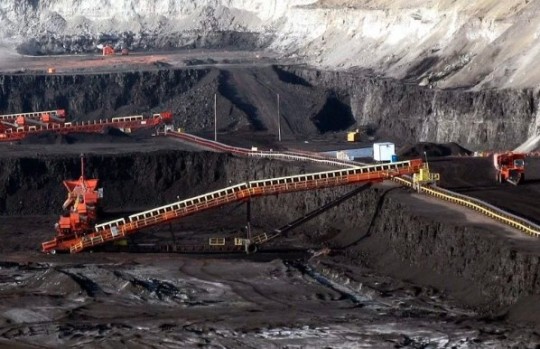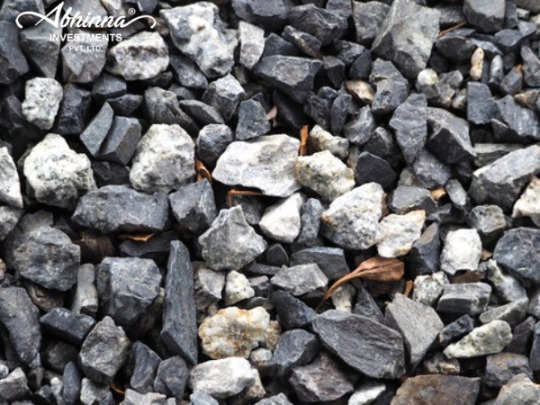#Mining companies in india
Explore tagged Tumblr posts
Text








London: Week 1
#far and away the trippiest part of this week#was when I was in the correspondence records for the british east india company in the late 1760s#looking for a recommendation for a particular factor from someone i’m focusing on for the britian section of this new project#and I accidentally stumbled upon a letter recommending that factor#from david hume#the david hume#signature and all#I truly have the weirdest (best) job ever#not the stones#me stuff#london#(the cat is not mine. but he is a very nice feature of where I’m staying. his name is tiggy and he’s super sweet)#((normally I would have some cool food pics. but my diet this week has been 90% tea. and nothing. so there’s that.))
3 notes
·
View notes
Text
Thank you! For everyone else, here's the photo:

September 24, 2014, Abhishek N. Chinnappa/Reuters.
everyone celebrating india's mission to the moon's south pole i love you and im with you but this is NOT india's first accomplishment in space!! im seeing a lot of people saying that but its not true. some other things we've done:
confirm the presence of water and ice on the moon
was the first asian nation to reach mars orbit, and the first nation IN THE WORLD to reach it in it's maiden attempt
saved thousands of lives from cyclone phailin in 2013 over the four days, resulting in 45 deaths when without them, would have been in the thousands at minimum
launched the first successful flight using the indigenous cryogenic engine
successfully neutralized a satellite in space with an anti-satellite (mission shakti, anyone?)
launched 104 satellites with one (1) rocket
THE VIKAS ENGINE??? HELLO?? NAMBI NARAYANAN??? even if you didnt know him before, surely youve seen the movie rocketry?
not to mention everything we've done in coordination with other nations, and achievements from Indian scientists and astronauts that were then taken by other nations, usually during war. plus, we've always been much more cost efficient than our space-faring peer nations
all to say!! we've always been there, and we've always been strong. our mission now only proves that, and we should scream it loud and proud for any westerner who ignores us again
#Also OP I'm sorry for the person using the profile picture I edited (same as mine) being insultingly patronizing about space debris.#I hope they carry that energy ten-fold to the US companies making satellite megaconstellations and Elon Musk launching a Tesla for no#good reason.#Space Exploration#India#reply
13K notes
·
View notes
Text
Outsource Web Data Mining Services in India

Relevant data is a never-ending need for businesses. However, the heterogeneous data collection via the right scripts and APIs is sometimes challenging and time-consuming. This is where data mining services help enterprises. Data Entry Expert is one of the top data mining service provider companies in India with practised data extraction experts to recognise the perfect sources of data. They can set up effective web crawlers and can handle large volumes of data. Plus, our data mining services help to extract relevant information from different web sources with over 99% accuracy. You can leverage our services to expedite insight analysis of your business process without investing in technology, infrastructure, or resources.
To know more - https://www.dataentryexpert.com/web-research/web-mining-services.php
#Web Mining#Web Data Mining#Web Mining Company#Web Mining Services#Web Mining Service#Web Data Mining in India#Web Data Mining Services#Web Data Mining Companies#Outsource Web Data Mining#Best Web Data Mining Services
0 notes
Text
Understanding Mining Geophysics: The Future of Resource Exploration with Parsan

Mining geophysics is an essential discipline in the exploration and extraction of natural resources, allowing for detailed, non-invasive analysis of what lies beneath the Earth’s surface. At Parsan, we leverage advanced geophysical techniques to locate and map valuable resources, making the exploration process more efficient and environmentally friendly.
Using methods like seismic, magnetic, and electrical surveys, mining geophysics helps identify mineral-rich zones and assess geological formations. These technologies not only help pinpoint resource locations but also allow for a clearer understanding of the subsurface structure, making the extraction process safer and more precise.
Benefits of Mining Geophysics:
Precision and Efficiency: Geophysical surveys provide accurate data on resource locations, reducing the time and cost of exploration.
Environmental Impact: By limiting unnecessary excavation, mining geophysics helps minimize environmental damage, making resource extraction more sustainable.
Risk Reduction: Understanding subsurface conditions before drilling or excavation reduces the risk of structural hazards, making the process safer for mining teams.
At Parsan, we bring industry-leading expertise in mining geophysics, utilizing state-of-the-art technology to help clients efficiently locate and assess mineral resources. This approach not only maximizes productivity but also aligns with environmentally conscious mining practices, benefiting both the industry and the environment. Whether for mineral extraction, groundwater exploration, or environmental assessments, Parsan’s geophysical solutions provide a clear path forward in resource exploration.
0 notes
Text
Digital Marketing Strategies for Mining Companies
Promoting mining businesses online is a massive endeavour. The mining industry contracts agencies specialising in digital marketing.
#Digital Marketing Strategies for Mining Companies#Digital Marketing Strategies for Mining Companies in india#Marketing Strategies for Mining Companies
0 notes
Text
#best safety shoes in india#best safety shoes brands in india#branded safety shoes#construction safety shoes#safety shoes manufacturer#safety shoes company#mining safety shoes#waterproof safety shoes in india#top safety shoes brands in india#cement work shoes
0 notes
Text
The Challenges of the Coal Mining Market

The Coal Mining Industry has been a fundamental pillar of global energy production for centuries, powering economies, fueling industries, and providing livelihoods to millions. However, in recent years, the industry has encountered numerous challenges that have tested its resilience and viability. In this blog, we'll delve into some of the key challenges facing the coal mining market and explore potential solutions to address them.
Environmental Concerns:
Perhaps the most prominent challenge facing the coal mining industry is its environmental impact. Coal extraction, processing, and combustion emit greenhouse gases, particulate matter, sulfur dioxide, and other pollutants, contributing to air and water pollution, deforestation, habitat destruction, and climate change. According to the International Energy Agency (IEA), coal-fired power plants are responsible for approximately 30% of global carbon dioxide emissions. As the world strives to reduce its carbon footprint and transition to cleaner energy sources, coal mining companies face mounting pressure to mitigate their environmental impact and adopt sustainable practices.
Regulatory Compliance:
The coal mining industry operates in a heavily regulated environment, subject to stringent environmental, health, and safety regulations imposed by governments and regulatory bodies worldwide. Compliance with these regulations entails substantial costs, including investments in pollution control technologies, mine safety measures, land reclamation efforts, and emission reduction initiatives. Failure to comply with regulatory requirements can result in fines, lawsuits, and reputational damage, posing significant challenges to coal mining companies' financial viability and operational sustainability.
Market Volatility:
The coal mining market is inherently volatile, susceptible to fluctuations in supply and demand, geopolitical tensions, economic conditions, and energy market dynamics. Changes in government policies, technological advancements, and shifts in consumer preferences also influence coal prices and market trends. Volatility in coal prices can affect the profitability of coal mining operations, disrupt investment plans, and create uncertainties for industry stakeholders. Moreover, competition from alternative energy sources, such as natural gas, renewables, and nuclear power, further exacerbates market volatility and challenges the long-term viability of coal as an energy source.
Declining Demand and Market Shifts:
The coal mining industry is facing declining demand for coal, driven by several factors, including the growing adoption of renewable energy sources, energy efficiency measures, and environmental regulations aimed at reducing greenhouse gas emissions. As countries strive to meet their climate goals under the Paris Agreement and transition to low-carbon economies, the demand for coal is expected to continue declining, particularly in developed nations. This shift in energy consumption patterns poses significant challenges to coal mining companies, necessitating diversification strategies and adaptation to changing market conditions.
Social Impacts and Community Relations:
Coal mining operations often have profound social impacts on local communities, including disruptions to land use, displacement of indigenous peoples, health and safety risks for workers, and socio-economic inequalities. Community opposition to coal mining projects, driven by concerns over environmental degradation, health hazards, and loss of livelihoods, can hinder project approvals, delay development timelines, and escalate project costs. Building and maintaining positive relationships with local communities, engaging in meaningful consultation and dialogue, and addressing socio-economic concerns are essential for mitigating social risks and securing social license to operate.
Conclusion
The Coal Mining Industry faces a myriad of challenges that require proactive and collaborative efforts from industry stakeholders, governments, and civil society to address effectively. Embracing sustainable practices, investing in clean technologies, diversifying energy portfolios, and fostering dialogue and engagement with communities are critical for navigating the challenges and ensuring the long-term viability and sustainability of the coal mining market.
#Coal Mining#Coal Mining Germany#Coal Mining India#Coal Mining Indonesia#Coal Mining Market#Coal Mining Industry#Coal Mining Companies#Global Coal Mining#Coal Mining Industry Reports#Coal Mining Market Growth#Coal Mining Market Size#Coal Mining Market Challenges#Coal Mining Market in India#Coal Mining Market Competitors#Coal Mining Market Outlook#Coal Mining Industry Research Reports#Coal Mining Market Research Reports#Coal Mining Market Major Players#Coal Mining Market Share
0 notes
Text
Visit the Oriental Solutions blog page to explore a dynamic company dedicated to providing end-to-end solutions for information processing and document management needs
#data curation#document management company in india#document management company#document management services in india#oriental solutions blogs#E-publishing company in India#Data mining company in Chennai India
0 notes
Text
The Boer War - ten things you didn't know!
The Boer War is a forgotten conflict that pitched the British Empire against a group of white settlers in Africa. Tony McMahon investigates.
The Boer War – a huge and bloody conflict that dominated the news at the turn of the 20th century. The biggest military conflict since the wars against Napoleon Bonaparte. And a grim foreshadowing of the two World Wars that lay ahead. Yet today, it’s large forgotten. Why? Below, I’m going to list ten things you need to know about the Boer War. But first, let’s go through some background so the…

View On WordPress
#Afrikaans#Baden Powell#Boer War#Conan Doyle#diamonds#Dutch East India Company#gold mine#history#Orange Free State#Paul Kruger#Queen Victoria#Rider Haggard#Rudyard Kipling#Transvaal#Van Gogh#voortrekker#Winston Churchill
0 notes
Text
The Boer War - ten things you didn't know!
The Boer War is a forgotten conflict that pitched the British Empire against a group of white settlers in Africa. Tony McMahon investigates.
The Boer War – a huge and bloody conflict that dominated the news at the turn of the 20th century. The biggest military conflict since the wars against Napoleon Bonaparte. And a grim foreshadowing of the two World Wars that lay ahead. Yet today, it’s large forgotten. Why? Below, I’m going to list ten things you need to know about the Boer War. But first, let’s go through some background so the…

View On WordPress
#Afrikaans#Baden Powell#Boer War#Conan Doyle#diamonds#Dutch East India Company#gold mine#history#Orange Free State#Paul Kruger#Queen Victoria#Rider Haggard#Rudyard Kipling#Transvaal#Van Gogh#voortrekker#Winston Churchill
0 notes
Text
Gold Mining Giants in India: Exploring the Top Players of 2023

As of 2023, India is home to several prominent gold mining companies. These companies play a significant role in the exploration, extraction, and production of gold within the country. Here is a short summary of the top gold mining companies in India:
Hutti Gold Mines Company Limited (HGML): HGML is a government-owned company located in Karnataka. It is the only company in India that produces gold by mining and processing gold ore. HGML operates the Hutti Gold Mine, which has been in operation for over a century and has produced substantial amounts of gold.
Deccan Gold Mines Limited (DGML): DGML is a privately owned company primarily focused on exploring and developing gold deposits in India. It holds multiple exploration licenses across different states and is actively engaged in prospecting and drilling activities.
NMDC Limited: Although primarily known for its iron ore mining operations, NMDC also explores and mines gold deposits. It operates the only gold mine in the country, the Bulyang Omchunder mine in Karnataka. NMDC is a government-owned company and has significant experience in mineral exploration and extraction.
Rama Mines (Mundra Group): Rama Mines is a private mining company involved in gold exploration and mining activities. It holds mining leases in various states and is actively engaged in expanding its gold mining operations.
Also Read: Top Gold Mining Companies In India 2023
These top gold mining companies in India contribute to domestic gold production, bolstering the country’s self-sufficiency and reducing the reliance on imports. They contribute to employment generation, revenue generation, and the overall growth of the mining sector in India.
0 notes
Text
What You Didn’t Knew About Dolomite Mining?

Dolomite mining is the extraction of dolomite rock from deposits in the earth. Continue to read this article if you want to know more about dolomite mining services.
Dolomite is a type of limestone that is composed of calcium carbonate and magnesium carbonate. It is commonly found in sedimentary rock formations and is often used as a decorative stone and for construction materials. The dolomite mining companies in India cannot function without it. Let’s get to know what other purposes it serves.
Vivid Facts About Dolomite And Dolomite Mining
Dolomite mining can be done through underground and surface mining techniques. Underground mining involves the use of tunnels to reach the dolomite deposit, while surface mining involves the removal of the overlying rock to access the deposit.
One of the biggest advantages of dolomite mining is that it can be done in areas where other minerals are not present. This is because dolomite has a high magnesium content, which makes it useful for a variety of industrial applications, such as in the production of steel and glass.
Another advantage of dolomite mining is that it is a relatively low-impact activity. Unlike other forms of mining, such as coal mining, dolomite mining does not require the use of heavy machinery or large amounts of water. This makes it a more environmentally friendly option for extracting minerals.
However, there are also some potential downsides to dolomite mining. For example, it can cause damage to the local ecosystem if not done properly. Additionally, the dust and noise generated by mining activities can be disruptive to local communities.
Finally, dolomite mining is a process that can be done in a responsible and sustainable manner. It offers a number of benefits, such as providing useful materials for construction and industry, and it can be done in areas where other minerals are not present.
However, it is important to consider the potential impact on the environment and local communities when planning and carrying out dolomite mining activities.
Where Will I Get Optimal Dolomite Extraction Services?
There are a lot of companies out there claiming to provide the most amazing dolomite extraction services. But when you prioritize sustainability over everything, Abhinna Investments is the one to put all your faith upon. There are various reasons to opt for them. However, the biggest one is the way they conduct viable dolomite mining practices.
Takeaways
Abhinna prides itself on the fact that it ranks above the top dolomite mining companies in India. Get in touch with them today if you think both about yourself and the environment. When you avail of servies from such reliable dolomite mining companies, there is absolutely nothing to worry about. To know more about how they function, crawl up their website.
0 notes
Text
One of the major legacies of the British control of India was the planting of peoples of Indian origin all over the British Empire, including Britain itself. India was considered to be a reservoir of cheap labour. After African slavery was legally ended in 1833, ‘indentured’ labourers were recruited from India to work on plantations in Mauritius, Guyana, Trinidad, and Jamaica. This was slavery in a new guise: many laboured under conditions no less degrading than slavery. Thereafter wherever need arose, Indian labour was employed. Indians worked in the plantations and mines in Ceylon, Malaya, Burma, South Africa and Fiji. Indian labour provided the manpower to build the East African Railway. Indian sailors worked the British merchant navy. Indian soldiers not only helped to maintain the British Raj in India, but were used as cannon fodder overseas in colonial wars of conquest to extend its frontiers.
Indians were brought to Britain too. They did not come as ‘indentured’ labourers, but the principle of cheap labour applied here as well. Many Indian servants and ayahs (nannies or ladies’ maids) were brought over by British families returning from India. Indian sailors were employed by the East India Company to work on its ships. Some of these servants and sailors settled permanently in Britain.
One of the results of the policy of introducing western education in India was that, from about the middle of the nineteenth century, many Indian students began arriving in Britain, some on scholarships, to study law or medicine or to prepare for other professions. Some came to take the examination for entry into the Indian civil service since this examination could only be taken in London. Some Indian students settled in Britain after qualifying, to practise as doctors, lawyers or in other professions. Some Indian business firms opened branches in England. Nationalist politicians came to London, the centre of power, to argue the cause of Indian freedom. Indian princes and maharajahs visited England, not only as guests of the Crown on formal occasions, like the coronations, but also to pay their ‘respects’ to the monarch or for pleasure. London, as the metropolitan capital, attracted many visitors from India. Exhibitions of Indian arts and crafts were displayed in England too. The Asian presence in Britain therefore goes a long way back and forms a prelude to the post-independence migration of Asians to Britain.
— Rozina Visram, Ayahs, Lascars and Princes: Indians in Britain, 1700-1947 (London: 1986), pp. 9-10.
158 notes
·
View notes
Text
Exploring Mining Geophysics with Parsan

Mining geophysics plays a critical role in the exploration and extraction of valuable minerals from the Earth’s crust. As an industry leader, Parsan is at the forefront of applying advanced geophysical techniques to help mining companies uncover hidden resources efficiently and sustainably.
Understanding Mining Geophysics: Mining geophysics involves the use of physical methods to detect and analyze subsurface geological formations. By measuring variations in the Earth’s magnetic, gravitational, electrical, and seismic properties, geophysicists can identify the presence of minerals such as gold, copper, iron, and other valuable commodities. These techniques are essential in locating mineral deposits that are not visible on the surface, making them a key tool for exploration.
Parsan’s Expertise: Parsan specializes in providing comprehensive geophysical surveys tailored to the unique needs of the mining industry. Using state-of-the-art equipment and methodologies, Parsan conducts magnetic, seismic, and electromagnetic surveys to map subsurface structures with precision. This detailed information allows mining companies to make informed decisions about where to drill, reducing the risk and cost associated with exploration.
Sustainable Practices: In addition to its technical expertise, Parsan is committed to promoting sustainable mining practices. By accurately mapping mineral resources, Parsan helps minimize environmental impact, ensuring that mining activities are conducted responsibly. Their approach not only supports the efficient extraction of minerals but also aligns with global standards for environmental stewardship.
The Future of Mining Geophysics with Parsan: As the demand for minerals continues to grow, the role of geophysics in mining will become even more vital. Parsan is dedicated to advancing geophysical technologies and techniques, ensuring that their clients stay ahead in a competitive market. By partnering with Parsan, mining companies can leverage cutting-edge geophysical insights to optimize their exploration and extraction processes.
Conclusion: Mining geophysics is an indispensable tool for modern mining operations, and Parsan is a trusted partner in delivering these essential services. With their expertise, commitment to sustainability, and innovative approach, Parsan is shaping the future of mining exploration.
0 notes
Text
in addition to being prone to an obvious naturalistic fallacy, the oft-repeated claim that various supplements / herbs / botanicals are being somehow suppressed by pharmaceutical interests seeking to protect their own profits ('they would rather sell you a pill') belies a clear misunderstanding of the relationship between 'industrial' pharmacology and plant matter. bioprospecting, the search for plants and molecular components of plants that can be developed into commercial products, has been one of the economic motivations and rationalisations for european colonialism and imperialism since the so-called 'age of exploration'. state-funded bioprospectors specifically sought 'exotic' plants that could be imported to europe and sold as food or materia medica—often both, as in the cases of coffee or chocolate—or, even better, cultivated in 'economic' botanical gardens attached to universities, medical schools, or royal palaces and scientific institutions.
this fundamental attitude toward the knowledge systems and medical practices of colonised people—the position, characterising eg much 'ethnobotany', that such knowledge is a resource for imperialist powers and pharmaceutical manufacturers to mine and profit from—is not some kind of bygone historical relic. for example, since the 1880s companies including pfizer, bristol-myers squibb, and unilever have sought to create pharmaceuticals from african medicinal plants, such as strophanthus, cryptolepis, and grains of paradise. in india, state-created databases of valuable 'traditional' medicines have appeared partly in response to a revival of bioprospecting since the 1980s, in an increasingly bureaucratised form characterised by profit-sharing agreements between scientists and local communities that has nonetheless been referred to as "biocapitalism". a 1990 paper published in the proceedings of the novartis foundation symposium (then the ciba foundation symposium) spelled out this form of epistemic colonialism quite bluntly:
Ethnobotany, ethnomedicine, folk medicine and traditional medicine can provide information that is useful as a 'pre-screen' to select plants for experimental pharmacological studies.
there is no inherent oppositional relationship between pharmaceutical industry and 'natural' or plant-based cures. there are of course plenty of examples of bioprospecting that failed to translate into consumer markets: ginseng, introduced to europe in the 17th century through the mercantile system and the east india company, found only limited success in european pharmacology. and there are cases in which knowledge with potential market value has actually been suppressed for other reasons: the peacock flower, used as an abortifacient in the west indies, was 'discovered' by colonial bioprospectors in the 18th century; the plant itself moved easily to europe, but knowledge of its use in reproductive medicine became the subject of a "culturally cultivated ignorance," resulting from a combination of funding priorities, national policies, colonial trade patterns, gender politics, and the functioning of scientific institutions. this form of knowledge suppression was never the result of a conflict wherein bioprospectors or pharmacists viewed the peacock flower as a threat to their own profits; on the contrary, they essentially sacrificed potential financial benefits as a result of the political and social factors that made abortifacient knowledge 'unknowable' in certain state and commercial contexts.
exploitation of plant matter in pharmacology is not a frictionless or infallible process. but the sort of conspiratorial thinking that attempts to position plant therapeutics and 'big pharma' as oppositional or competitive forces is an ahistorical and opportunistic example of appealing to nominally anti-capitalist rhetoric without any deeper understanding of the actual mechanisms of capitalism and colonialism at play. this is of course true whether or not the person making such claims has any personal financial stake in them, though it is of course also true that, often, they do hold such stakes.
538 notes
·
View notes